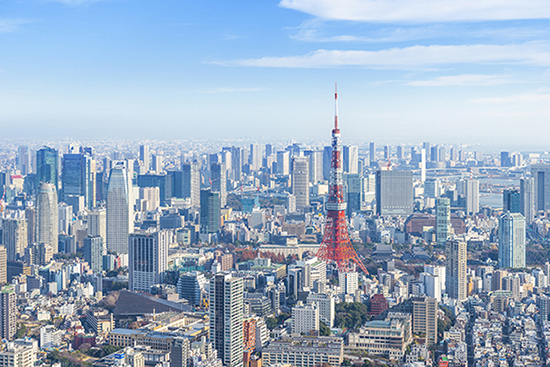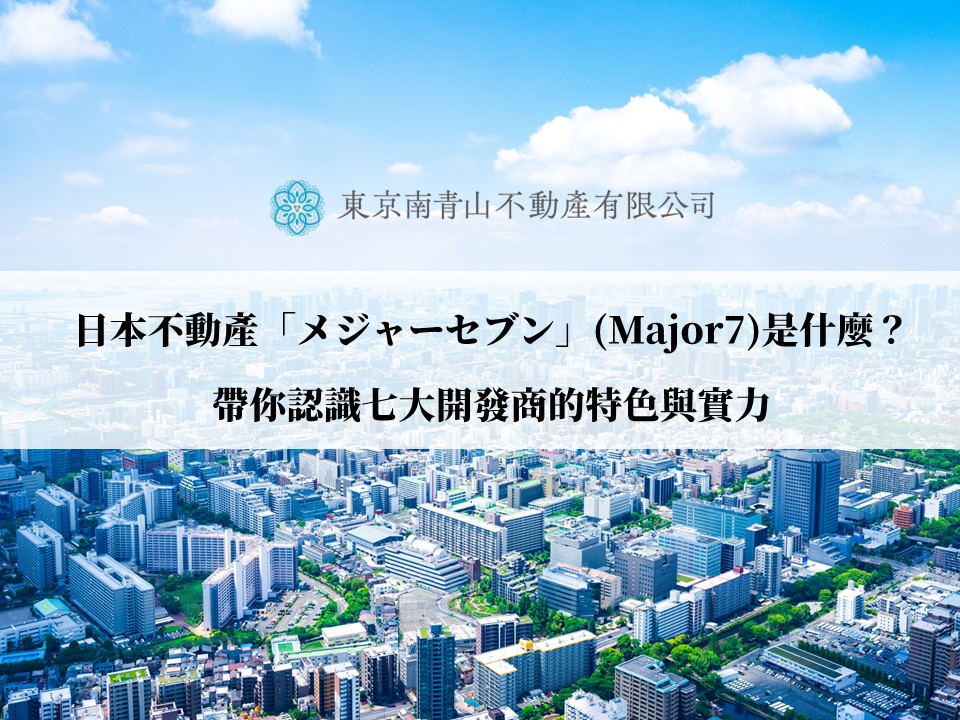Q4 (Jan-Mar 2022) real GDP growth rate: -0.1% YoY
Q4 real GDP: 135 trillion 676 billion yen / 0.4% YoY (Source: Cabinet Office)
Learning about market conditions relevant to property is essential when considering the selling or buying of property. Many people are interested in the impact on the property market following the spread of the coronavirus from 2020 onwards, the hosting of the 2021 Tokyo Olympics and the current crisis in Ukraine in 2022.
This report provides an update on market trends relevant to property, based on the latest information available as of July 2022. Hopefully this may help you understand the favorable times to buy or sell property.
[1. Forthcoming economic policy following the shooting of former PM Shinzo Abe]
On 8 July at around 11.30 am, former Prime Minister Abe was shot while delivering a speech on the street near Yamato Saidaiji Station on the Kintetsu railway line in Nara City and was confirmed dead later the same day. This tragic incident caused great shock and deep grief. In considering how this incident may affect the property market over the coming months, the following information is of interest to us.
On Monday 11 July, Prime Minister Kishida declared at a press conference at the LDP headquarters that he would "inherit the thoughts of former Prime Minister Abe, further promote initiatives to build on the various achievements he left behind and hand Japan over to the next generation". Furthermore, at the same day's meeting of the Bank of Japan's Branch Managers, the following are some of the measures they have decided to take. 1) Continue quantitative and qualitative monetary easing with long-term and short-term interest rate operations, 2) Continue the policy of expanding the monetary base, 3) Support the financing of companies and others and to stabilize financial markets, 4) Take additional monetary easing measures without hesitation, 5) Keep the current level of long-term and short-term interest rates or below.
Additionally, the LDP's decisive victory in the Upper House election secured a majority of the seats up for election on its own and, together with Komeito, continued to secure a stable base in the Upper House, basically allowing it to concentrate on policy implementation for up to three years until 2025, without the need for nationwide national elections. Given Prime Minister Kishida's statement and the BOJ decision mentioned above, it is unlikely that there will be any major disruption to the Japanese economy as it will basically follow the line laid down by former Prime Minister Abe.
[ 2. Property market related information: Basic data on a real economy].
Table 1 shows that the number of newly built housing starts, which had been on an upward trend since the beginning of the year, fell sharply in May, by -4.3%.
This can be attributed to the impact of the recent crisis in Ukraine, which has accelerated the existing price increase of building materials.
Some experts also argue that this is also due to the calming down of demand for larger homes, which increased during Coronavirus pandemic, as well as a declining number of condominiums being built for sales.
There are also reasons for the decline in the number of units supplied, as identified in Table 2.
One is that the number of sites suitable for the supply of condominiums is decreasing as the urbanization of the city progresses.
In the past, former factories, warehouses and company housing sites were released to the market as part of an asset renewal process and transformed into large-scale condominiums.
The conversion of such business land has run its course, and in recent years, redevelopment and rebuilding projects that require adjustment to commercialization have become prominent.
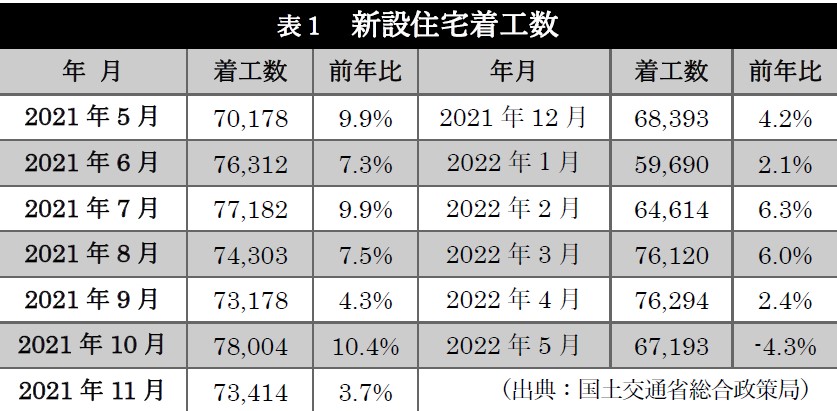
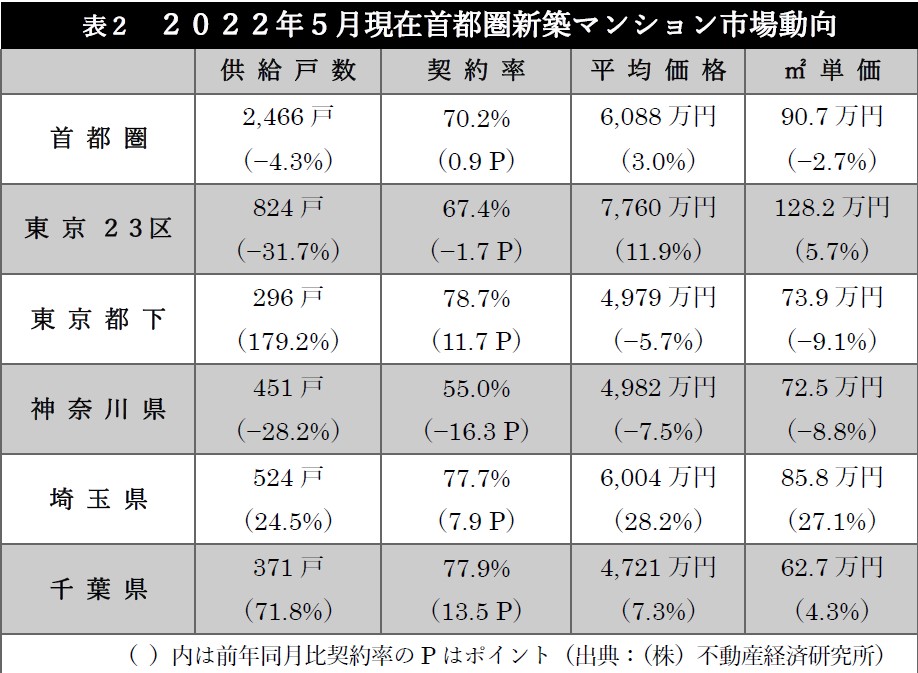
Another factor is rising construction costs. Building costs are influenced by labor, raw material, and transport costs, which have remained high due in part to the global rise in resource prices.
The construction cost index for reinforced concrete (RC) apartment buildings for March 2022, published by General Incorporated Foundation / Construction Research Institute, was 130.3 in terms of net construction costs, with 2011 average set at 100, suggesting that the costs have risen by about 30% in little more than a decade.
Land costs and building costs account for most of the cost of new condominiums.
Rising construction costs affect the business potential of suburban areas, where land is relatively cheap and the proportion of building costs is high and suppress the number of units supplied.
If there are not enough units supplied to meet demand, this will lead to price increases.
[3. Information on Property Market Trends: Economic Outlook]
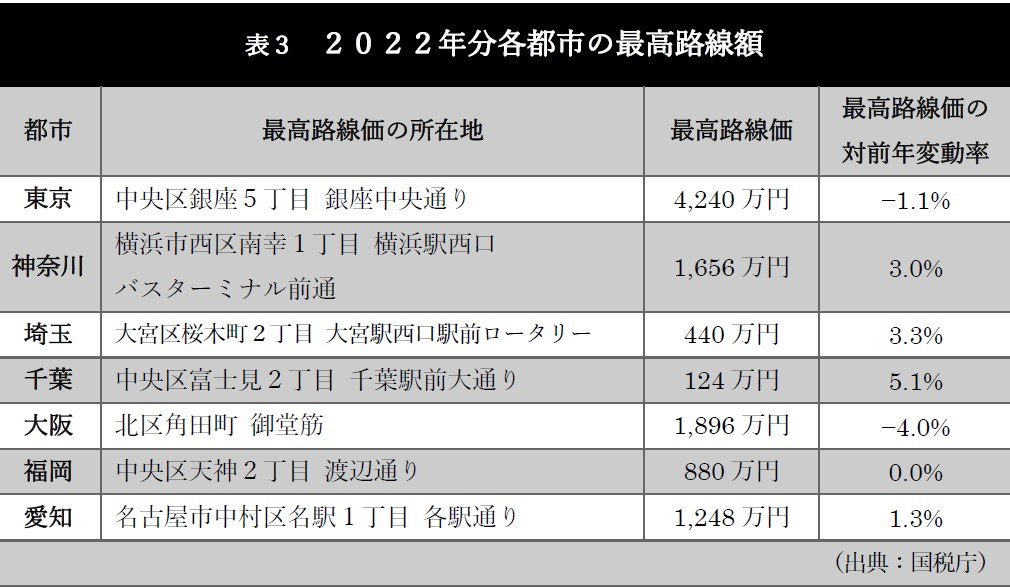
The road prices for 2022, announced by the National Tax Agency on 1 July 2022, are the assessed value used as the basis for calculating the amount of tax on land in Japan. Table 3 shows the highest road prices in major cities in Japan and the percentage change from the previous year.
This can be assumed to be the result of the decrease in the number of tenants and people, particularly in Tokyo and Osaka, where retailers and other service providers tend to assemble, because of the coronavirus infection control measures.
In fact, in other prefectures, which are also major economic centers but are inferior to Tokyo and Osaka in terms of the number of retail outlets, it can be confirmed that road prices are rising or remaining flat across the board, indicating a relatively stable upward trend in road prices.
This indicates that economic activity is gradually returning after the worst of the coronavirus pandemic, and we can anticipate the possibility of an upward trend in road prices in Tokyo and Osaka soon, when the opening of new retail outlets, a factor known as the lagging index that is reflected rather slowly, is recorded.
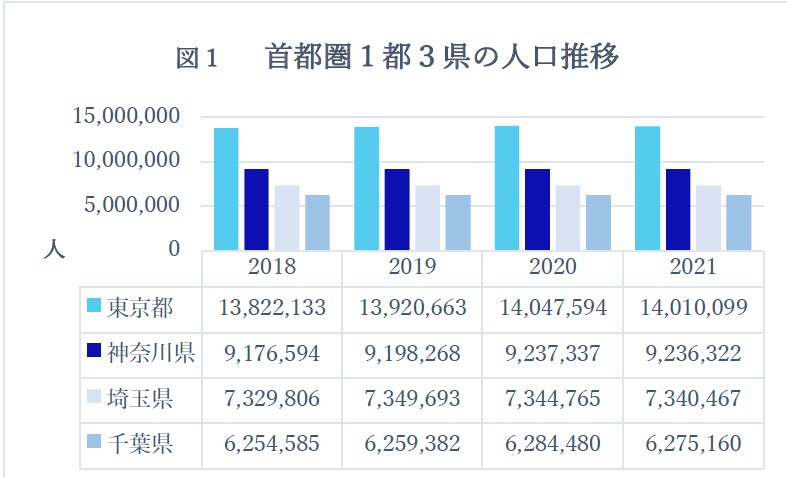
Figure 1 shows the population trends in the Tokyo metropolis and three other metropolitan prefectures over the past four years, and confirms that Tokyo, Kanagawa and Chiba all continued to expand until 2020, while Saitama also continued to expand until until 2019.
However, following the spread of coronavirus infections that began in 2020, the number of cases in Saitama decreased in 2020 and in the other three prefectures in 2021.
This is thought to be mainly due to people moving away from the densely populated metropolitan area and the outflow of population outside the four prefectures due to the spread of remote working, but the most recent information confirms that the trend of population inflow into one metropolis and three metropolitan prefectures is increasing again.
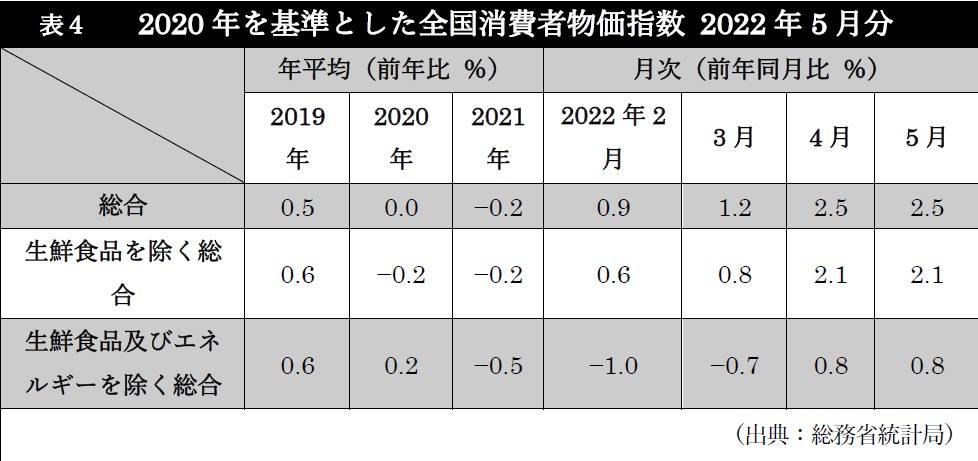
The overall consumption trend is expanding compared to last year, with an increase of more than 2% in the last two months.
This can also be seen in the index excluding fresh food, which is the main inflationary factor, and the energy industry, which has increased by 0.8% for two months in a row, again confirming an expansionary trend.
From these figures, it can be said that there are signs that consumer confidence has reached a bottom. Looking ahead, the Government has pledged to take measures to prevent the spread of coronavirus infection, and further expansion and recovery can be expected if economic and social activities are stabilized upon this ground.
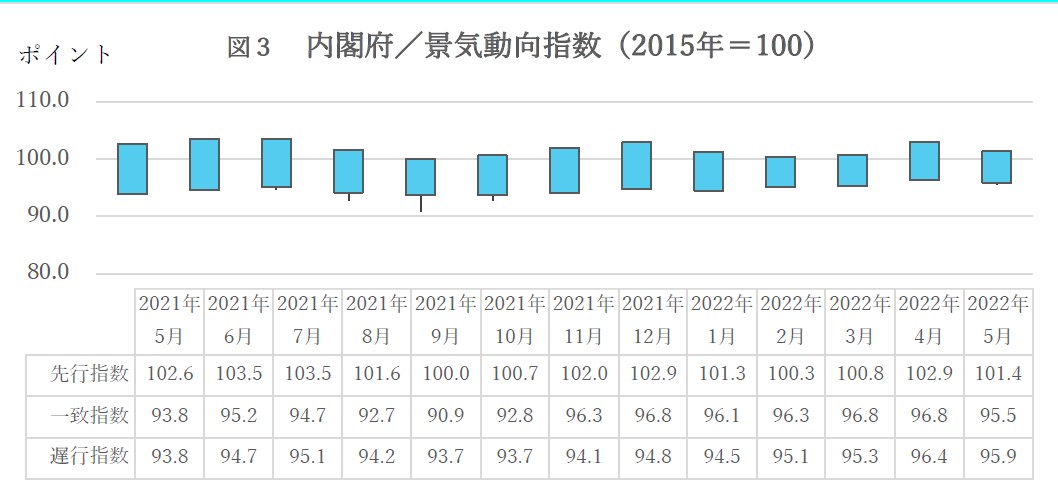
Figure 3, Cabinet Office Economic Outlook Index shows that, firstly, the leading index fell for the first time in three months, by -1.5 points compared to the previous month.
This is because the three-month backward moving average (the high and low values obtained by comparing the figures for the month under study with the averages for February, March and April and for March, April and May) showed an increase of 0.37 points, a rise for the second month in a row, while the seven-month backward moving average (the high and low values calculated by comparing the figures for the month under study with the averages for October, November, December and January, February, March and April averages and November, December, January and the high and low values obtained by comparing the figures for the surveyed month with the averages for October, November, December, January, February, March and April as well as November, December, January, March, April and May) rose by 0.10 points, the second consecutive month of increase.
In the consistent index, the index fell by 1.3 points compared to the previous month, the first fall in four months; the three-month backward moving average fell by 0.26 points, the first fall in seven months; the seven-month backward moving average rose by 0.38 points, the seventh consecutive monthly rise; and the three-month average fell by 0.27 points, the first fall in seven months, the seventh consecutive rise in seven months.
In the lagging index, the index fell by 0.5 points compared to the previous month, the first fall in four months; the three-month backward moving average rose by 0.27 points, the sixth consecutive monthly increase; the seven-month backward moving average rose by 0.32 points, the third consecutive monthly increase; and the seven-month forward moving average fell by 0.27 points, the sixth consecutive monthly increase.
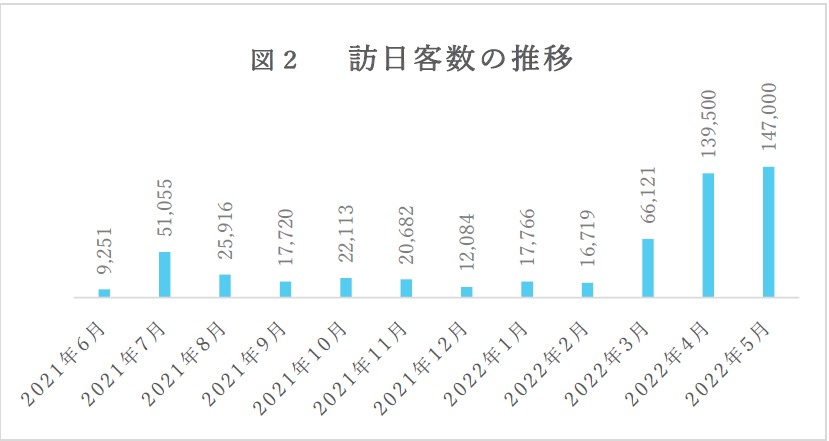
According to Japan National Tourist Organisation (JNTO), new entries for non-tourist purposes resumed under certain conditions from March 2022, and a demonstration project was implemented in May to resume visits to Japan for tourism purposes.
The number of foreign visitors to Japan exceeded 100,000 for two consecutive months, yet in May, due to continued restrictions on entry for tourism purposes, the number of visitors decreased by 94.7% to 147,000 compared to the same month in 2019 before the spread of coronavirus pandemic, as shown in figure 2.
Nevertheless, the Japanese Government has revised the entry checks and waiting period for visitors from 1 June 2022 and resumed accepting foreign tourists on 10 June for escorted package tours with a travel agent as the person in charge of admission, so a significant increase is expected in the future.
[4. Prospects for Future Property Purchases]
Despite the domestic and international instability, business climate seems to be on a gradual growth path under a stable government, as we have seen above. Furthermore, as of 15 July, the exchange rate was 138.90 yen to the US dollar (109.91 yen on the same day last year), the weakest in 24 years which is a favorable opportunity for property purchases.


